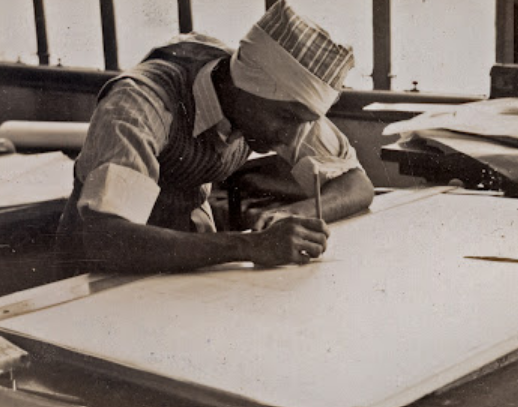Early Life and Education of Habib Rahman
Habib Rahman was born in 1915 in Calcutta, India, into a family with a strong academic and professional background. His father served as a judge, which provided Habib with a stable and intellectually stimulating environment during his formative years.1
This background likely played a significant role in shaping his analytical and disciplined approach to both his studies and his later professional life.
Table of Contents
Education in India
Rahman’s early education took place in Calcutta, where he demonstrated an aptitude for the sciences and engineering. He pursued a bachelor’s degree in mechanical engineering from the University of Calcutta, graduating in 1939.
This initial foray into engineering laid the foundation for his future studies and career in architecture, showcasing his versatility and capacity for understanding complex technical subjects.
Advanced Studies at MIT
Habib Rahman’s educational journey took a significant turn when he moved to the United States to further his studies. He was accepted into the prestigious Massachusetts Institute of Technology (MIT), where he pursued a Master’s degree in Architecture.
He graduated in 1944, becoming the first Indian to complete this program at MIT. His time at MIT was crucial in honing his architectural skills and exposing him to contemporary architectural theories and practices.
Professional Training in the United States
From 1944 to 1946, after completing his master’s degree, Rahman gained invaluable experience working with several renowned architecture firms in Boston.
These included Lawrence B. Anderson, William Wurster, Walter Gropius, and Ely Jacques Kahn. Working under these eminent architects, Rahman was able to apply his academic knowledge in practical settings, learning firsthand about modernist architectural principles and the intricacies of architectural design and project management.
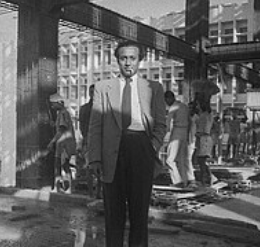
Influence of Notable Architects
- During his time in the United States, Rahman was particularly influenced by Walter Gropius, a key figure in the modernist movement and the founder of the Bauhaus School.2
- Gropius’s emphasis on functional design and the integration of art, technology, and craftsmanship had a lasting impact on Rahman.
- This influence is evident in Rahman’s later works, which often reflect modernist principles such as simplicity, functionality, and the use of modern materials and construction techniques.
- Equipped with a robust educational background and practical experience, Habib Rahman returned to India, ready to make significant contributions to the field of architecture in his home country.
- His education and training in the United States had prepared him to take on large-scale projects and to introduce modernist architectural concepts to the Indian context.
- This period marked the beginning of Rahman’s illustrious career, during which he would leave a lasting legacy on Indian architecture.
Also Read: Ilja Dragunov: Early Years, Biography, Net Worth, WWE, Salary, Endorsement, Personal Life And More
Work in Calcutta (1946-1953)
In 1946, Habib Rahman returned to Calcutta, bringing with him the rich experience and modernist influences he had acquired during his time in the United States. He was appointed as the senior architect for the government of West Bengal, a role that allowed him to significantly impact the architectural landscape of the region.
His tenure from 1947 to 1953 was marked by several pioneering projects that showcased his innovative approach and his ability to blend modernist principles with local needs.
Gandhi Ghat Memorial
- Rahman’s first major project upon his return was the Gandhi Ghat, a memorial dedicated to Mahatma Gandhi. Completed in 1948, this project was not just an architectural endeavor but also a symbol of national importance.3
- The design of Gandhi Ghat reflected Rahman’s modernist training, characterized by its clean lines, functional spaces, and thoughtful integration with the surrounding environment.
- The memorial’s aesthetic and symbolic significance caught the attention of Prime Minister Jawaharlal Nehru, who was impressed by Rahman’s vision and execution.
- This project established Rahman’s reputation as a prominent architect and opened doors for future opportunities.
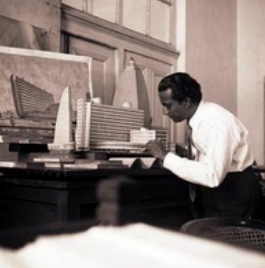
New Secretariat Building
Among Rahman’s notable contributions in Calcutta was the design and construction of the new Secretariat building. Completed in 1954, this fourteen-story structure was a groundbreaking project in several ways.
It was India’s first steel frame high-rise building, demonstrating Rahman’s commitment to modern construction techniques and materials. The building not only symbolized architectural innovation but also represented the post-independence aspirations of India, aiming to establish modern infrastructure and governance.
Impact and Legacy in Calcutta
Habib Rahman’s work in Calcutta during this period laid the foundation for modernist architecture in India. His projects were characterized by their innovative use of materials, structural integrity, and aesthetic appeal.
Rahman’s ability to merge modernist principles with the cultural and functional needs of Indian society set him apart as a visionary architect.
Work in Delhi (1953-1976)
In 1953, Habib Rahman’s career took a significant leap forward when he was appointed as the senior architect of the Central Public Works Department (CPWD) in New Delhi.
This role positioned him at the heart of India’s post-independence architectural development, providing him with a platform to influence the architectural landscape of the nation’s capital. Rahman’s tenure in Delhi from 1953 to 1976 was marked by numerous landmark projects that combined modernist principles with Indian aesthetics.
Early Designs in Delhi
One of Rahman’s early contributions in Delhi was the design of the University Grants Commission (UGC) building, completed in 1954. This building, like many of his other works, showcased his modernist approach, characterized by functional design, simplicity, and the use of modern materials.
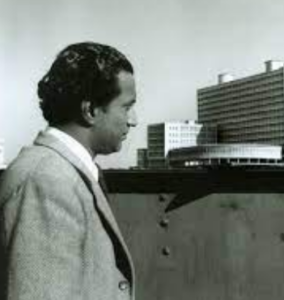
The UGC building served as an administrative hub for higher education in India, reflecting Rahman’s ability to create functional yet aesthetically pleasing institutional spaces.
Designing the Tomb of Maulana Azad
One of Rahman’s most notable projects in Delhi was the design of the tomb of Maulana Abul Kalam Azad, a prominent Indian freedom fighter and the first Minister of Education in independent India. Completed in 1959, the tomb was a significant departure from traditional Indian mausoleums.
Nehru’s requirements for the tomb were clear: it should not conflict with the nearby heritage sites, the Red Fort and Jama Masjid, and should reflect Azad’s humble personality.
Impact on Delhi’s Architectural Landscape
During his tenure in Delhi, Habib Rahman’s work significantly influenced the architectural landscape of the city. His projects were characterized by their modernist aesthetics, functional design, and innovative use of materials. Rahman’s ability to integrate modern architectural principles with the cultural and historical context of Delhi made his buildings stand out.
Also Read: Aryna Sabalenka: Age, Biography, Net Worth, Badminton Career, Family, Salary And More
Habib Rahman: Architect of Nehruvian Modernity in Delhi
Delhi’s architectural landscape is often viewed through the lens of its rich Mughal heritage and the grand designs of Lutyens’ imperial city. However, there exists another architectural narrative that has significantly shaped the city’s identity: the modern architecture of the Nehruvian era.
This period saw the rise of innovative architectural designs that sought to symbolize India’s progress and modernization post-independence. Among the architects who contributed to this vision, Habib Rahman stands out as a key figure who played a pivotal role in shaping “modern” Delhi.
Nehruvian Vision and Post-Independence Architecture
- In the years following India’s independence, Jawaharlal Nehru, the first Prime Minister, envisioned a nation that embraced modernity while acknowledging its rich cultural heritage.
- Nehru’s vision for India was one of progress, self-reliance, and development.
- This vision extended to the architectural realm, where Nehru supported the construction of modern buildings that would serve as symbols of the new nation’s aspirations.
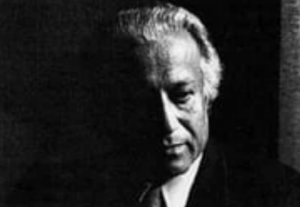
- Nehru’s era was marked by an emphasis on public buildings, institutions, and affordable housing projects. Unlike cities like Mumbai and Kolkata, which were predominantly shaped during colonial times, Delhi saw a significant portion of its public infrastructure being developed in the post-independence period.
- This period was characterized by the work of a set of young Indian architects who brought fresh perspectives and modernist principles to their designs.
- Habib Rahman was among these architects whose contributions were crucial in defining the architectural ethos of post-independence Delhi.
Habib Rahman’s Role in Modernizing Delhi
In 1953, Habib Rahman was appointed as the senior architect of the Central Public Works Department (CPWD) in New Delhi. This role placed him at the forefront of India’s architectural development during a transformative period.
Rahman’s work during his tenure with CPWD from 1953 to 1976 significantly influenced the city’s architectural landscape, reflecting the Nehruvian ideals of functionality, simplicity, and modernity.
Key Projects and Contributions
One of Rahman’s early projects in Delhi was the design of the University Grants Commission (UGC) building, completed in 1954. The UGC building exemplified Rahman’s modernist approach, emphasizing clean lines, functional spaces, and the use of contemporary materials.
The building served as an administrative hub for higher education in India, symbolizing the nation’s commitment to educational development.
Habib Rehman Personal Life
In 1945, Habib Rahman married Indrani Rahman, a woman of remarkable talent and beauty who would later gain fame as Miss India 1952 and an acclaimed Odissi dancer. Indrani’s achievements in the realm of dance and beauty pageants brought a unique blend of cultural and artistic flair to their partnership.
The couple had two children, Ram Rahman and Sukanya Rahman, who inherited their parents’ artistic inclinations and have made notable contributions in their respective fields.
Indrani Rahman
Indrani Rahman was a pioneering figure in Indian classical dance, particularly in popularizing the Odissi dance form. Her accomplishments in dance and her role as a cultural ambassador of India added a rich layer of cultural significance to the Rahman family.
Indrani’s marriage to Habib brought together two spheres of creativity and innovation: modernist architecture and classical dance.
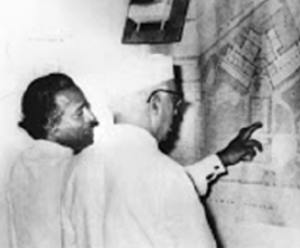
Children: Ram Rahman and Sukanya Rahman
- Their son, Ram Rahman, is a distinguished photographer, curator, and activist. He has been an influential voice in the fields of art and culture, often reflecting on the legacy of his father and the rich cultural milieu in which he was raised.
- Ram’s work frequently explores themes of urbanism, architecture, and social change, continuing the intellectual and creative tradition of his family.
- Sukanya Rahman, their daughter, is a noted dancer and choreographer. She has carried forward her mother’s legacy in the world of classical dance, contributing to the preservation and promotion of Indian dance forms.
- Sukanya’s work bridges the traditional and contemporary, much like her father’s architectural designs.
Habib Rahman’s Beliefs
Habib Rahman was known for his secular and rationalist beliefs. He identified as an atheist and was described by his son, Ram Rahman, as “greatly suspicious of all organized religions.”
This skepticism towards organized religion influenced his worldview and, in many ways, his approach to architecture. Rahman’s focus on functionality, simplicity, and modernity in his designs can be seen as a reflection of his rationalist and secular outlook.
FAQ’S
1. Who is Habib Rehman?
Ans: Habib Rehman is an architect and urban planner known for his significant contributions to architecture and urban development in India, particularly in Calcutta (now Kolkata) and Delhi. He is recognized for his modernist approach to architecture and his role in shaping several key projects in these cities.
2. What is Habib Rehman’s Age?
Ans: The exact age of Habib Rehman isn’t readily available, but he was active in the mid-20th century. He was born on April 1, 1915, and passed away on September 5, 2012.
3. What is Habib Rehman’s Educational Background?
Ans: Habib Rehman studied architecture at the University of Liverpool, where he received his training in modernist architectural principles. His education played a crucial role in shaping his architectural style and approach to urban planning.
4. What Notable Work Did Habib Rehman Do in Calcutta?
Ans: In Calcutta, Habib Rehman is known for designing several important buildings that reflect his modernist architectural style. One of his notable projects includes the “Chowringhee Mansion” and the modernization of various urban spaces that aimed to bring a contemporary touch to the city’s infrastructure.
5. What Notable Work Did Habib Rehman Do in Delhi?
Ans: In Delhi, Habib Rehman made significant contributions to the architectural landscape with projects such as the planning and development of government buildings and public spaces. His work included designing the Rabindra Bhavan and contributing to the urban development plans that influenced the modern look of the city.
Read More: Anna Jay: Biography, Age, Career, Family Background, Relationship Status And More Explained
